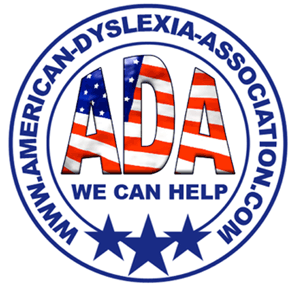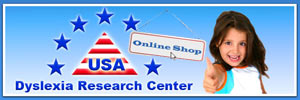Dyslexia, Bilingualism, and Learning a Second Language by Francois Grosjean, Ph.D.
Dyslexia in bilinguals and second language learners.
Interview conducted by François Grosjean for his Psychology Today blog “Life as a Bilingual”: https://www.psychologytoday.com/intl/blog/life-bilingual
The National Institute of Neurological Disorders and Stroke (NINDS) defines dyslexia as a brain-based type of learning disability that specifically impairs a person’s ability to read (see here). The British National Health Service (NHS) gives a fuller definition: it is a common learning difficulty that can cause problems with reading, writing, and spelling. The NHS also lists a number of problems that people with dyslexia have: they read and write very slowly, confuse the letters of words, put letters the wrong way round, have poor or inconsistent spelling, have difficulty with information that is written down, etc. (see here).
Dyslexia is the most common learning disability and has been the object of much research published in books, chapters, and articles. Psychology Today has also reported on this work through its bloggers such as Dr. J. Richard Gentry (see here for an example). Unfortunately, we know much less about dyslexia in bilinguals, in second language learners, or in students schooled in a second language. The latter can be in immersion or bilingual school programs or can come from minority language groups being educated in the majority language. Dr. Fred Genesee, Professor Emeritus at McGill University, is one of the leading experts on this topic and he has very kindly agreed to answer a few of our questions. We thank him wholeheartedly.
Are there more dyslexics among bilinguals than among monolinguals?
There is no evidence that dyslexia is more common among bilinguals than among monolinguals.
Does being bilingual cause dyslexia or increase the probability of becoming dyslexic?
Again, there is no evidence that bilingualism causes dyslexia. Dyslexia is linked to neurocognitive factors that are inherited. It is thought that children with dyslexia have an inherited impairment processing the sounds of language. This means that children born with the genetic profile that is linked to dyslexia will have difficulty learning to read whether they are bilingual or monolingual.
When talking about dyslexia in children, shouldn’t one insist on something that you have put forward in your writings—the distinction between reading impairment and difficulty learning to read?
Yes, this crucial. Reading impairment is due to underlying neurocognitive factors mentioned in my previous answer whereas difficulty learning to read is linked to other factors, such as the child’s learning environment, motivation, quality of instruction, or general health. For example, some children have difficulty learning to read in school because the quality of instruction they receive is not always optimal; because they have an undetected visual impairment which makes it difficult to see and process written language; or because they are uninterested in learning to read because they find the reading materials in school boring. These children’s difficulties are not genetic in nature and are not true dyslexia.
Concerning children who are in the process of learning a second language, can they be at greater risk for difficulty learning to read than children learning through their first language?
Yes, this may be the case because they are still learning the language which is being used to teach reading in school and some teachers may not have modified instruction to take this into account. Second language learners might also have greater difficulty than monolingual students learning to read because the cultural content of the reading material is unfamiliar, or because the teacher’s cultural expectations of how they should behave in class is foreign or even difficult for them.
Unfortunately, tests that assess progress in learning to read can make it appear that bilingual children have an impairment because they do not consider the linguistic level of the children. But, none of these factors are symptomatic of reading impairment or dyslexia per se.
Going back to actual dyslexia, what are the difficulties faced by second language learners who are dyslexic?
The core difficulties faced by second language learners who are dyslexic are the same as those of monolingual children with dyslexia. The core problem for these children is difficulty learning to decode written words accurately and fluently so that they can make sense of them and understand written text. If children’s word reading skills are impaired, then their comprehension of written text will also be impaired because they cannot read the individual words accurately and fluently enough to create meaningful text.
In addition, second language learners with dyslexia face the challenges encountered by all second language learners—limited vocabulary and grammatical competence and lack of familiarity with the cultural or social context of the text. In this respect, their challenges are different from monolingual children.
Can the effects of dyslexia in bilinguals be stronger in one language than in the other?
Dyslexia in bilinguals is evident in both languages. This is the case because the impairment that underlies dyslexia is part of the learner’s genetic profile and, thus, its effects will influence the child’s ability to learn to read in any language. Of course, since many bilinguals are more proficient in one language than the other, the magnitude of their impairment will be more evident in their weaker language.
A bilingual child who has a reading problem in only one of his/her languages does not have dyslexia. This child has difficulty learning to read in one of his/her languages that is due to other factors, as we discussed earlier.
It is often recommended that the parents of children who are thought to be dyslexic stop using the home language on the assumption that this will make it easier for their child to overcome their dyslexia. What is your opinion on this?
There is no evidence to support this assumption. If the child is from a minority language community where the language is important for communication with parents, extended family members, or others in the community, parents should continue to use the home language. There are many reasons for this. First, proficiency in the home language is important if the child is to become an engaged and well-adjusted member of his family and community. In addition, parents of minority language children are often more proficient in the home language and, thus, they are better able to assume their full parental responsibilities if they interact with their child in that language.
What are the other reasons?
To continue reading, please access the original post here.
Article originally posted on Mar 01, 2019 in https://www.psychologytoday.com/intl/blog/life-bilingual/201903/dyslexia-bilingualism-and-learning-second-language
by Francois Grosjean
Université de Neuchatel
Suisse/Switzerland
[email protected]
Web site: www.francoisgrosjean.ch
Blog: http://www.psychologytoday.com/blog/life-bilingual

François Grosjean, Ph.D., is Emeritus Professor of psycholinguistics, Neuchâtel University, Switzerland. His domains of interest are the perception, comprehension and production of language, be it speech or sign language, in monolinguals and bilinguals. He also has interests in biculturalism, applied linguistics, aphasia, sign language, and natural language processing. He is better known for his work on bilingualism in which he has investigated the holistic view of bilingualism, language mode, the complementarity principle, the processing of code-switching and borrowing, as well as the bilingualism of the Deaf.
He is the author of numerous articles and of seven books on bilingualism: Life with Two Languages (Harvard University Press, 1982), Studying Bilinguals (Oxford University Press, 2008), Bilingual: Life and Reality (Harvard University Press, 2010), The Psycholinguistics of Bilingualism (with Ping Li; Wiley-Blackwell, 2013), Parler plusieurs langues: le monde des bilingues (Albin Michel, 2015), The Listening Bilingual: Speech Perception, Comprehension, and Bilingualism (with Krista Byers-Heinlein; Wiley-Blackwell, 2018) and A Journey in Languages and Cultures: The Life of a Bicultural Bilingual (Oxford University Press, 2019).







